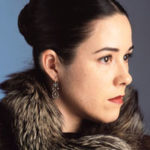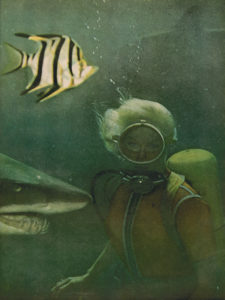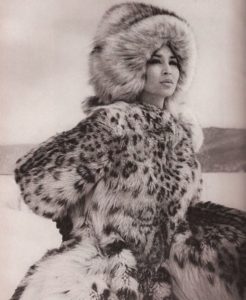1960s Fashion Photography
- By The Museum at FIT
- In Expedition Research Fashion History Objects Publication
- Tagged with Allan Ballard Antonia Bioeckesteyn Arctic Circle Bob Richardson Carolyn Cowan China Machado Cornwallis Island Diana Vreeland fashion Harper’s Bazaar James Terence Brady Jill Kennington John Cowan Mary Kruming Michelangelo Antonioni Mongolian lamb Patricia Mears photography Resolute Bay Richard Avedon Russian snow leopard Space Age The Museum at FIT Vogue
- On 11 Oct | '2017


Harper’s Bazaar, May 1966, photograph by Bob Richardson / Art Partner.
One of the most compelling components of Expedition: Fashion from the Extreme was fashion photography of the 1960s. My fellow curators, Liz Way and Ariele Elia, and I all found this decade to be the era in which expeditions made a decided impact on high fashion. Not only were designers turning to the Space Age, deep sea diving, and the Arctic for inspiration, so too were fashion editors. We were so taken with the vibrant imagery that we chose John Cowan’s girl on an ice floe as the “poster girl” for our exhibition and book.
The influence of expeditions on 1960s fashion photography was celebrated brilliantly in the pages of leading magazines throughout the decade. This phenomenon is understandable, as the rise of youth styles and the deterioration of established fashion codes allowed photographers to experiment far beyond their studios. Magazine editors occasionally styled models in actual space suits and diving equipment. They also clad their models in outrageous fashions while diving in the ocean or standing on the frozen tundra.

China Machado, Russian Snow Leopard by James Terence Brady of Bonwit Teller, St. Donat, Quebec, June 25, 1962, photograph by Richard Avedon. © The Richard Avedon Foundation.
Despite the less-than-enlightened approach of some fashion imagery, dramatic location shoots became a mainstay of Vogue magazine from 1963 to 1971, when Diana Vreeland was its editor-in-chief. Dynamic and highly creative, Vreeland consistently pushed the limits of fashion styling and photography throughout her decades-long career. She was among the first editors to oversee location shoots around the world while an editor at Harper’s Bazaar during World War II. By the time she arrived at Vogue, Vreeland not only expanded the scope of travel to exotic locations, she amped up the glamour quotient and sense of daring.
(more…)

